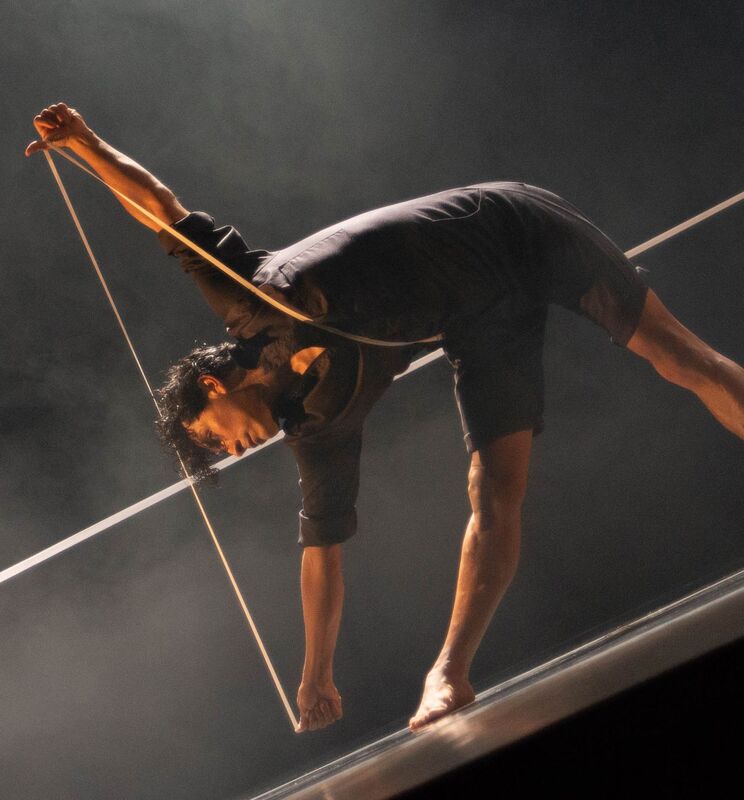|
La Serpiente, a contemporary dance company based in Morelia, Mexico, performed on Sunday night at the Performing Arts Center at UAlbany. (Photo by Gloria Minauro) Good dancers deserve good choreography.
But that’s not what happened on Sunday night at UAlbany’s Performing Arts Center. The marvelous movers of La Serpiente had the challenge of making tepid choreography with a thin premise into something meaningful. And despite their efforts in achieving some sublime moments, their talents couldn’t upend the monotony of “Treatise About the Line.” Choreographed by Laura Martinez Ayala, the industrial-like piece centers on a supple line that stretched from wing to wing. Four dancers, Liliana Rosales Merlos, Francisco Javier Esqueda Plascencia, Francisco Javier Ponce Orozco and Abdiel Villasenor Talavera, interacted with the line – slipping over and under it, caressing it, following it and getting tied up in it. But the line never spoke, it was just an object that didn’t seem to have any influence on those who encountered it. It was not dangerous or desirable. It was just there, a limp prop that Ayala didn’t use to advance an engaging plight. Thus, for the duration, which was an hour, the dancers were bumping up against a Spadex rope without projecting a message or providing a payoff. This was difficult to write as the show was part of La Serpiente’s first tour of America. The ensemble is from Mexico, a place where few contemporary dance companies hail, so I wanted to root for them, to express that they were the dancing neighbor to the south that we have been longing to see. Alas, that was not to be. However, the dancers were special. Much of their movement was bold, reminiscent of contact improvisation that was popular in the 1970s where bodies launched bodies beyond their solo abilities. The men were especially adept – able to trustingly share their weight to achieve mid-air poses that hint at aggression but also compassion. The piece also reeked of atmosphere. With an airy and percussive electronic score by Pedro Vargas Madrigal, it felt like the dancers were sneaking around the bowels of an abandoned factory. At times they were stiff and robotic, other times floppy and fluid, but again, it sadly added up to obtuseness. It did lead to a lot of questions as to what the Ayala was aiming for. Were the players expected to toe the line, step out of line, put their life on the line, cross the line? They did none of these or if they did, it wasn’t communicated. Thus, the outcome was an audience that mentally pleaded for an end. It was unfortunate that these dancers had to settle for tedious to get a ticket to a North American tour. Let's hope they get second chance and a better dance.
0 Comments
Leave a Reply. |
Wendy
|

 RSS Feed
RSS Feed
